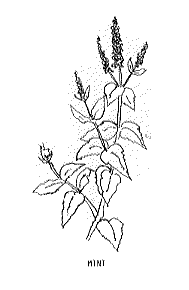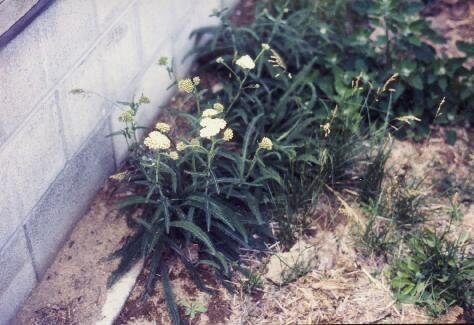Do you ever look at the plants around you and wonder if they have any uses? What plants did the people use before they had modern medicine to heal their wounds and ailments? There are a number of common plants (weeds) that are easy to find and identify, that you can use for first aid out in the wild. Knowing what plants you can use for first aid purposes, whether in your own backyard or out in the woods, is an empowering position to be in.
The first consideration when gathering plants is the identification. It is critical that you know for sure what the plant is before you use it. A good identification book is helpful. Even better, is to know someone in your community that can help you, an herbalist, the county extension agent, or a local botanist.
The time to learn about a plant is before you need it. Study the terrain you are in as you identify plants, you will be able to recognize similar habitats when you see them. If you know the requirements of the plant, such as if it grows in sun or shade and moist or dry soil, it is easier to find. When gathering plants you should leave an area in as good or better condition than you found it. This means not destroying other plant life or leaving unfilled holes or debris lying around. Do not destroy the plant if it is not necessary. If all you need are the leaves, do not pull it up by the roots. Do not take all of the plants in any area and then only what you need.
Do not gather near roadways where there is contamination by fuel emissions. You must also be careful about gathering in areas that have been chemically sprayed.
The plantains (Plantago major and P. lanceolata) are common wayside weeds growing in a great variety of places from urban lawns and meadows to riparian areas in deserts and mountains. The plants can range from big lush rosettes to leaves in mowed lawns that are short and flattened. The ribbed leaves grow in a rosette form and the flower stalks are taller than the leaves with tiny yellow flowers clustered at the end. P. major has rounded or ovate leaves, while P. lanceolata’s leaves are longer and narrower.
 Used as a fresh poultice, plantain is useful for stings, bites, scrapes, and minor wounds. It is antimicrobial and anti-inflammatory. Children love to learn to make a spit poultice to medicate their minor injuries. Simply chew a few leaves and apply them to the problem area, nature’s bandaid. It can be made into a tea for sore throats, coughs and diarrhea.
Used as a fresh poultice, plantain is useful for stings, bites, scrapes, and minor wounds. It is antimicrobial and anti-inflammatory. Children love to learn to make a spit poultice to medicate their minor injuries. Simply chew a few leaves and apply them to the problem area, nature’s bandaid. It can be made into a tea for sore throats, coughs and diarrhea.
Yarrow (Achillea millefolium) is another common herb that can be found in most terrains. It is hairy and gray-green in color with the leaves alternate, three or four inches long, one half to one inch wide and clasping the stem. They are cut into fine segments, giving the leaves a feathery appearance. The flowers are white and like minute daisies in a flattened head or cyme.

Yarrow can stop or slow bleeding if the fresh leaves are packed into a bleeding wound. The tea of the flowers and leaves is a good remedy for colds, fevers and upset stomachs. A yarrow poultice can relieve muscle pain and joint inflammation.
 Mints tea (Mentha sp.) can be soothing to digestive upsets and colds. Mint is easy to identify by its distinctive scent and that it grows along water. Mint grows from a creeping rootstock and has square stems that grow about one to two feet tall. The leaves are alternate and lance shaped with a point. The pinkish or lilac colored flowers are spikes of small flowers arranged in whorl. Mints are pretty safe plants to use: if it looks like a mint and smells like a mint, it is a mint.
Mints tea (Mentha sp.) can be soothing to digestive upsets and colds. Mint is easy to identify by its distinctive scent and that it grows along water. Mint grows from a creeping rootstock and has square stems that grow about one to two feet tall. The leaves are alternate and lance shaped with a point. The pinkish or lilac colored flowers are spikes of small flowers arranged in whorl. Mints are pretty safe plants to use: if it looks like a mint and smells like a mint, it is a mint.
Willow shrubs and trees are a source of salicylates, the ingredient in aspirin, which is the most common headache remedy in the world. It reduces pain, inflammation and can help control diarrhea. Boil the bark or many small twigs and make a strong tea. Drink the tea or use it as an antiseptic poultice or compress for wounds, swelling and burns.
The are many varieties of willow (Salix sp.), ranging from large trees to shrub-like bushes. They are frequently found growing along streams or waterways. The bark can be brown, black or yellow, with narrow leaves and catkins or pussy willows in the spring. The willow is closely related to birch, poplar and cottonwood and all of these trees contain salicylates to some degree.
| Homeostatic (stops bleeding) | |
|---|---|
| alder (cones) | cobwebs |
| horsetail | oak |
| puffball mushroom (dried spoors) | shepherd’s purse |
| yarrow | |
| Cuts and abrasions | |
|---|---|
| alum root | bitterbrush |
| crane’s bill | dock |
| juniper | knapweed |
| manzanita | oak |
| Oregon grape | plantain |
| poplar | potentilla |
| red clover | sagebrush |
| St. John’s wort | sweet clover |
| willow | |
| Stings | |
|---|---|
| bitterbrush | oak |
| plantain | |
| Nettle Stings | |
|---|---|
| dock | plaintain |
| Antiseptic | |
|---|---|
| bitterbrush | juniper |
| mullein flowers | Oregon grape |
| pine pitch | sagebrush |
| willow | |
| Burns | |
|---|---|
| cleavers | crane’s bill |
| mallow | oak |
| plaintain | |
| poplar | potentilla |
| red clover | willow |
| Headache | |
|---|---|
| mint | poplar |
| willow | |
| Digestive upsets | |
|---|---|
| catnip | juniper |
| mallow | mint |
| poplar | sagebrush |
| strawberry leaf | sweet clover |
| yarrow | |
| Diarrhea | |
|---|---|
| alum root | alder(cones) |
| blackberry root | nettles |
| plantain | poplar |
| rose hips | strawberry leaves |
| yarrow | |
| Laxative | |
|---|---|
| bitterbrush | horehound |
| Oregon grape | yarrow |
| yellow dock | |
| Toothache | |
|---|---|
| sagebrush | yarrow |
| Colds | |
|---|---|
| bitterbrush | catnip |
| elder | mints |
| rose hips | sagebrush |
| yarrow | |
| Coughs | |
|---|---|
| horehound | mallow |
| mullein | |
| Muscular aches | |
|---|---|
| alfileria | juniper |
| mallow | mullein flowers |
| sagebrush | yarrow |
| Packing wounds | |
|---|---|
| cattail down | mullein leaves |
| sphagnum moss | yarrow |
 Herbal First Aid
Herbal First Aid